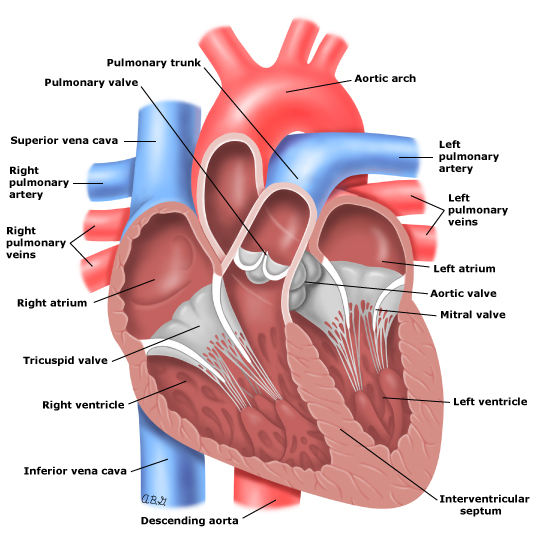The mammalian heart has 4 chambers enclosed by muscular tissue. The top two chambers are called the atria (plural of atrium) and the lower two the ventricles. A septum completely separates the right and the left sides of the heart from each other. However, there is a free passage of blood between the atrium and the ventricle on the same side. The right side of the heart is the venous or lung part and the left side is the arterial or systemic part of the heart. The wall of the ventricles are much thicker than that of the atria and the wall of the left ventricle again is thicker that that of the right ventricle.

The Heart
The reasons for the difference in thickness of the heart-muscle are:
- The only work that the atria does is to store the blood for short periods and then to force it into the ventricles, thus the walls are very thin.
- The left ventricle works against the resistance of the whole systemic vascular system, whilst the right ventricle only works against the vascular resistance of the lungs.
The heart has four valves, two on each side. They serve to stop any backflow of blood. The valves between the atria and the ventricles are called the atrio-ventricular (AV) valves. The valve that stops the backflow of blood from the aorta to the left ventricle is called the aortic valve and the valve between the pulmonary artery and the right ventricle is called the pulmonary valve . Cardiac muscles are supplied with blood via the coronary arteries.